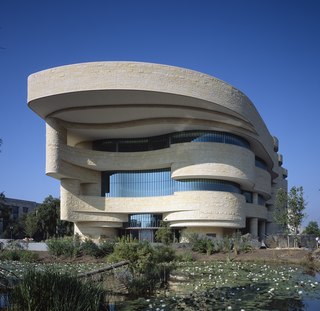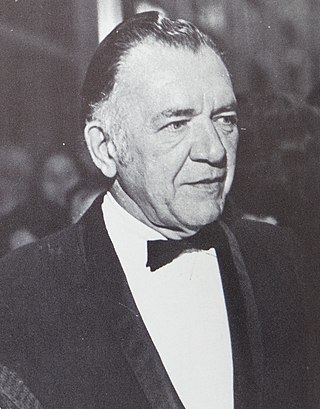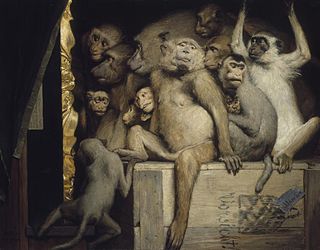Related Research Articles

Jacques Martin Barzun was a French-born American historian known for his studies of the history of ideas and cultural history. He wrote about a wide range of subjects, including baseball, mystery novels, and classical music, and was also known as a philosopher of education. In the book Teacher in America (1945), Barzun influenced the training of schoolteachers in the United States.

Music journalism is media criticism and reporting about music topics, including popular music, classical music, and traditional music. Journalists began writing about music in the eighteenth century, providing commentary on what is now regarded as classical music. In the 1960s, music journalism began more prominently covering popular music like rock and pop after the breakthrough of The Beatles. With the rise of the internet in the 2000s, music criticism developed an increasingly large online presence with music bloggers, aspiring music critics, and established critics supplementing print media online. Music journalism today includes reviews of songs, albums and live concerts, profiles of recording artists, and reporting of artist news and music events.

The Newseum was an American museum at 555 Pennsylvania Avenue NW dedicated to news and journalism that promoted free expression and the First Amendment to the United States Constitution, while tracing the evolution of communication.

The National Museum of the American Indian is a museum in the United States devoted to the culture of the indigenous peoples of the Americas. It is part of the Smithsonian Institution group of museums and research centers.

Carl Van Vechten was an American writer and artistic photographer who was a patron of the Harlem Renaissance and the literary executor of Gertrude Stein. He gained fame as a writer, and notoriety as well, for his 1926 novel Nigger Heaven. In his later years, he took up photography and took many portraits of notable people. Although he was married to women for most of his adult years, Van Vechten engaged in numerous homosexual affairs over his lifetime.

Walter Francis Kerr was an American writer and Broadway theatre critic. He also was the writer, lyricist, and/or director of several Broadway plays and musicals as well as the author of several books, generally on the subject of theater and cinema.

Art criticism is the discussion or evaluation of visual art. Art critics usually criticize art in the context of aesthetics or the theory of beauty. A goal of art criticism is the pursuit of a rational basis for art appreciation but it is questionable whether such criticism can transcend prevailing socio-political circumstances.

Harold Charles Schonberg was an American music critic and author. He is best known for his contributions in The New York Times, where he was chief music critic from 1960 to 1980. In 1971, he became the first music critic to win the Pulitzer Prize for Criticism. An influential critic, he is particularly well known for his encouragement of Romantic piano music and criticism of conductor Leonard Bernstein. He also wrote a number of books on music, and one on chess.

Alex Ross is an American music critic and author who specializes in classical music. Ross has been a staff member of The New Yorker magazine since 1996. His extensive writings include performance and record reviews, industry updates, cultural commentary, and historical narratives in the realm of classical music. He has written three well-received books: The Rest Is Noise: Listening to the Twentieth Century (2007), Listen to This (2011), and Wagnerism: Art and Politics in the Shadow of Music (2020).

Michael Benson is an American author, artist, filmmaker, and exhibitions producer whose most recent work centers on the convergence of art and science. In the last fifteen years Benson has produced a series of large-scale exhibitions of digitally constructed planetary landscapes in major international museums. His most recent book, Space Odyssey, is a detailed nonfiction examination of the production of Stanley Kubrick's 2001: A Space Odyssey. The book's publication was timed to coicide with the 50th anniversary of the film's theatrical release. Benson has written for The New York Times, The Washington Post, The New Yorker, The Atlantic, and Rolling Stone. He is currently using scanning electron microscope technologies at the Canadian Museum of Nature in Ottawa to view and photograph natural objects for a book and exhibition project titled Nanocosmos. He is a Fellow of the New York Institute of the Humanities, a Weizmann Institute Advocate for Curiosity, and was recently a Visiting Scholar at the Center for Bits and Atoms at the MIT Media Lab.

The National Museum of African American History and Culture (NMAAHC), colloquially known as the Blacksonian, is a Smithsonian Institution museum located on the National Mall in Washington, D.C., in the United States. It was established in 2003 and opened its permanent home in 2016 with a ceremony led by President Barack Obama.

Michael David Sorkin was an American architectural and urban critic, designer, and educator. He was considered to be "one of architecture's most outspoken public intellectuals", a polemical voice in contemporary culture and the design of urban places at the turn of the twenty-first century. Sorkin first rose to prominence as an architectural critic for the Village Voice in New York City, a post which he held for a decade throughout the 1980s. In the ensuing years, he taught at prominent universities around the world, practiced through his eponymous firm, established a nonprofit book press, and directed the urban design program at the City College of New York. He died at age 71 from complications brought on by COVID-19 during the COVID-19 pandemic.
Allan Kozinn is an American journalist, music critic, and teacher.

David Hickey was an American art critic who wrote for many American publications including Rolling Stone, ARTnews, Art in America, Artforum, Harper's Magazine, and Vanity Fair. He was nicknamed "The Bad Boy of Art Criticism" and "The Enfant Terrible of Art Criticism". He had been professor of English at the University of Nevada Las Vegas and distinguished professor of criticism for the MFA program in the Department of Art & Art History at the University of New Mexico.
Michael A. Walsh is an American music critic, author, screenwriter, media critic, historian, and cultural-political consultant.
Raymond Ericson was an American music critic who wrote articles for The New York Times for 30 years.
Donal Henahan was an American music critic and journalist who had lengthy associations with the Chicago Daily News and The New York Times. With the Times he won the annual Pulitzer Prize for Criticism in 1986; he had been a finalist in 1982.
Bill Adler is an American music journalist and critic. Since the late 1960s, he has worked in the music business in a variety of capacities, including as a record store clerk, radio disc jockey, critic, publicist, biographer, record label executive, documentary filmmaker, museum consultant, art gallerist, curator, and archivist. He is known best for his tenure as director of publicity at Def Jam Recordings (1984–1990), the period of his career to which the critic Robert Christgau was referring when he described Adler as a "legendary publicist".

Paul Kelpe was a German-born American abstract painter. His constructions integrating found objects into paintings were the first such works created in the United States and he painted two of the five Williamsburg murals, the first abstract murals in the United States. In addition to his mural work for various American government projects, he was an innovative independent painter and university art professor. He was a pioneer of American abstract art, including his work in Chicago during a period in which abstracts were not well accepted or appreciated.
References
- ↑ Goldfrey, Brigid (7 August 2017). "Buyouts are Changing The New York Times". MediaFile. Retrieved 10 September 2020.
- ↑ Rothstein, Edward (9 September 2020). "Exorcism in Lieu of Enlightenment". Die Zeit. Retrieved 10 September 2020.
- ↑ Yoe, Mary Ruth, "Everybody's a critic". University of Chicago Magazine , February, 2004 (96:3). Listing for Vision of Utopia at the end of the UCM article appears to be incorrect; the corrected listing in this Wiki article is based on Amazon listing, picture of book cover at Amazon, and internal Wiki links.